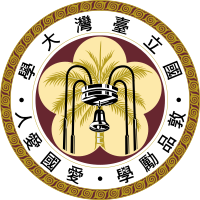【尖端講座系列】第三十一場 重媒/謀未來:前衛藝術的後設歷史思考 Remediating the Future: Metahistorical Reflections on the Avant-Garde
【尖端講座系列】第三十一場
講題:重媒/謀未來:前衛藝術的後設歷史思考 Remediating the Future: Metahistorical Reflections on the Avant-Garde
主講人:Tyrus Miller(Dean, School of Humanities; Professor, Department of Art History, University of California, Irvine)
主持人:廖咸浩(國立臺灣大學外國語文學系特聘教授)
時間:4/27 (三) 10:00-12:00
地點:文學院演講廳+YouTube線上直播串流(使用Cisco Webex)
主辦單位:國立臺灣大學人文社會高等研究院
合辦單位:國立臺灣大學外國語文學系
講者介紹:
Tyrus Miller is dean of the School of Humanities and a professor of Art History and English at University of California, Irvine. He is the author and editor of several books on modernism and the avant-garde, including Late Modernism: Politics, Fiction, and the Arts Between the World Wars (1999); Singular Examples: Artistic Politics and the Neo-Avant-Garde (2009); Modernism and the Frankfurt School (2014); and Georg Lukács and Critical Theory: Aesthetics, History, Utopia (2022). He edited the Cambridge Companion to Wyndham Lewis (2016) and has also edited and translated Georg Lukács’s post-World War II essays in Hungarian, The Culture of People’s Democracy: Hungarian Essays on Literature, Art, and Democratic Transition, 1945-1948 (2013).
摘要:
This paper focuses on two cases in the European avant-garde in which we can observe not only an active unsettling and reconstruction of specific artistic and cultural traditions, but also a more radical exploration of the very structural preconditions, in historical temporality, of tradition. The oeuvre of Hungarian artist and Bauhaus leader László Moholy-Nagy encompasses a vast diversity of media, including painting, graphic art, photography, photogram, photomontage, sculptural assemblage, kinetic sculpture, light projection, and film. In the increasing penetration of technology in the practice of art and design, and the immersion of experience in an environment technically shaped as “vision in motion,” Moholy-Nagy discerned a mobilization of historical experience that unsettled the boundaries between past, present, and future, as history’s material signs passed through successive technical remediations. He positioned his artistic work as a relay point in the present through which the future could reach back into the past and reconfigure it, as a changeable repertory of material traces. I go on to discuss the work German collage artist Kurt Schwitters, whose work analogously attacks the ordering of time that underlies tradition and offers alternative measures of time. In his collages and writings, Schwitters invests apparent sequentiality with singular metrical differences, explores illogical successions within sequences, and illustrates the disruptive workings of the unruly, desiring body on sequence. Schwitters also disrupts time through intermittence and unexpected recurrence, especially in his prose works. Lastly, he revises the idea of artistic “consequence,” as it is used, for instance, in narrative or in musical form. Schwitters replaces the notion of “consequentiality” as realization in successive time intervals of an anticipated effect, with an alternative notion of consequence as determined by relevance, the metrics of which are multiple, qualitative, and overdetermined. In their artistic works and thought, both Moholy-Nagy and Schwitters offer alternative models for a contemporary appropriation of the past that emphasize complexity, remediation of the past, and freedom from traditional authority, while not being just ahistorically "futuristic."




